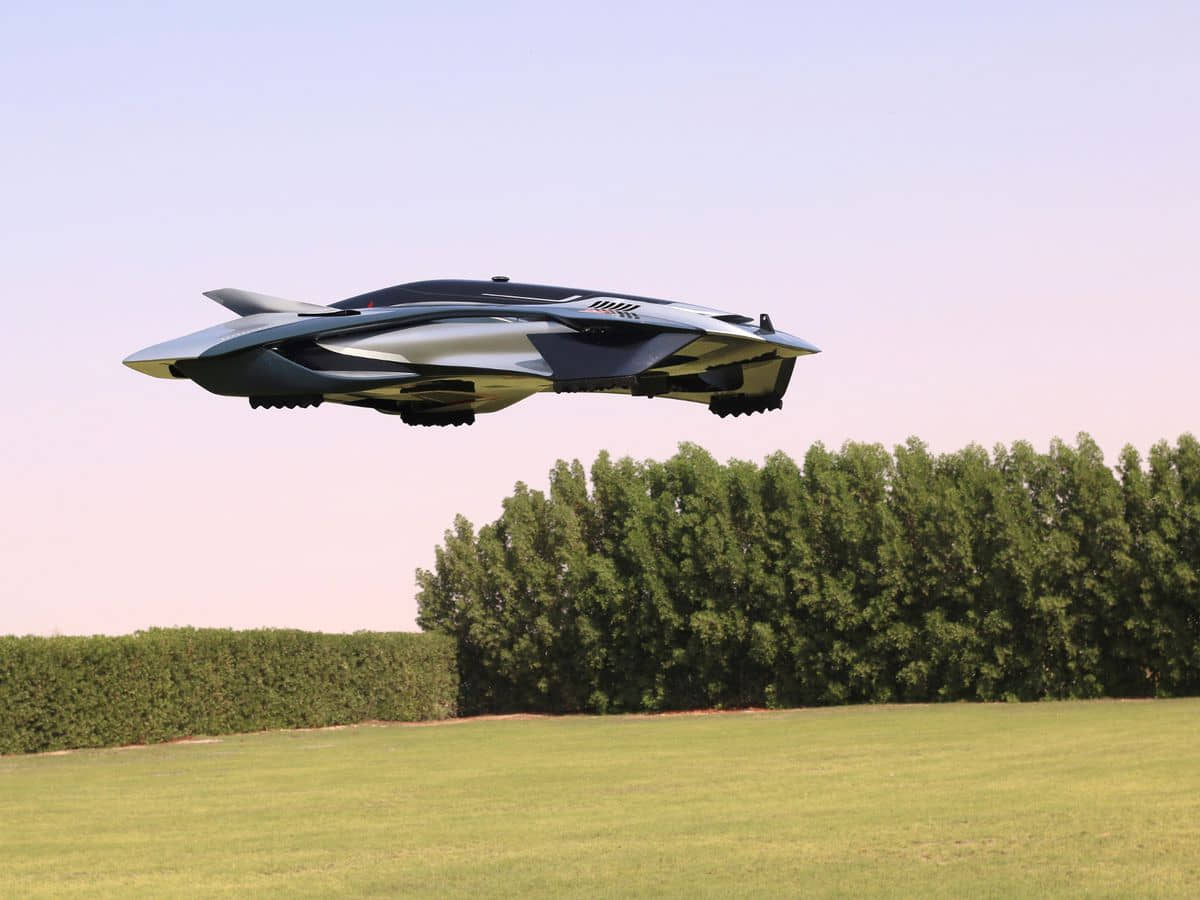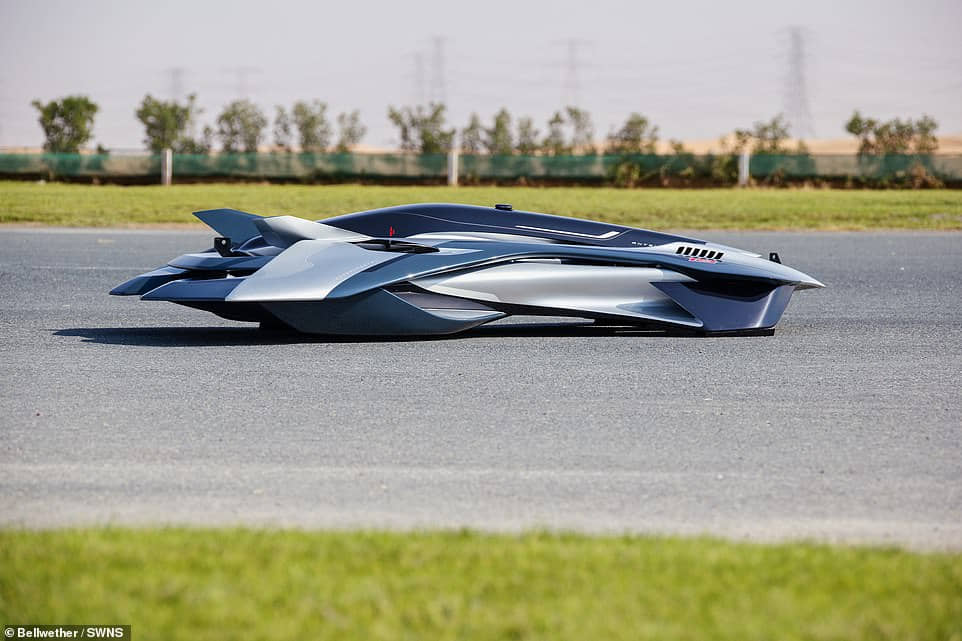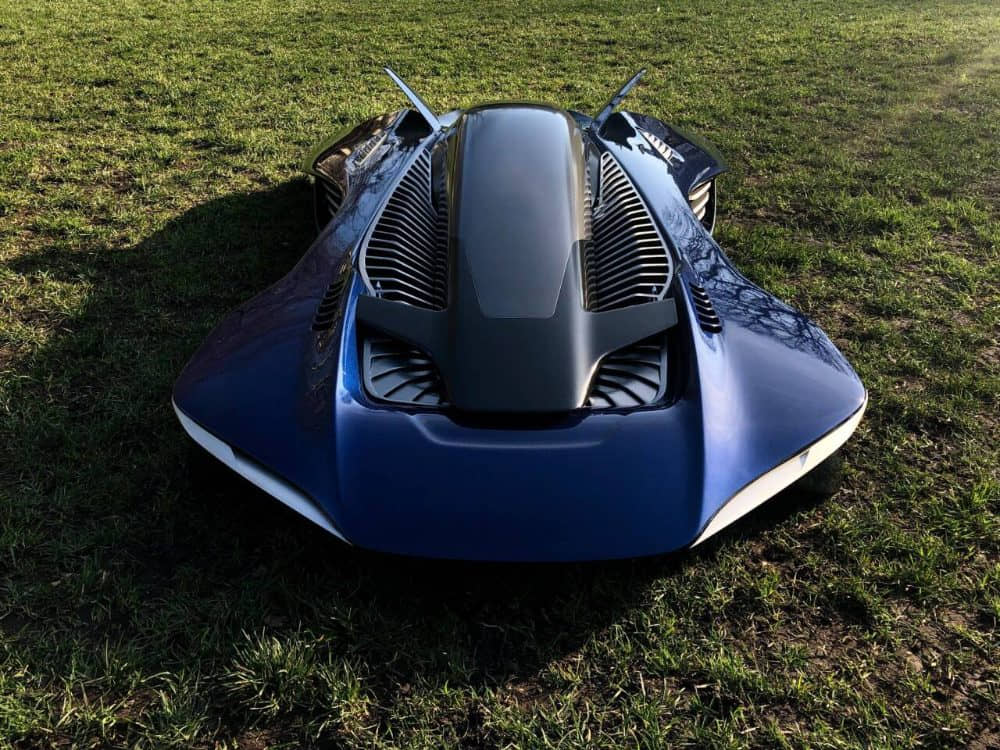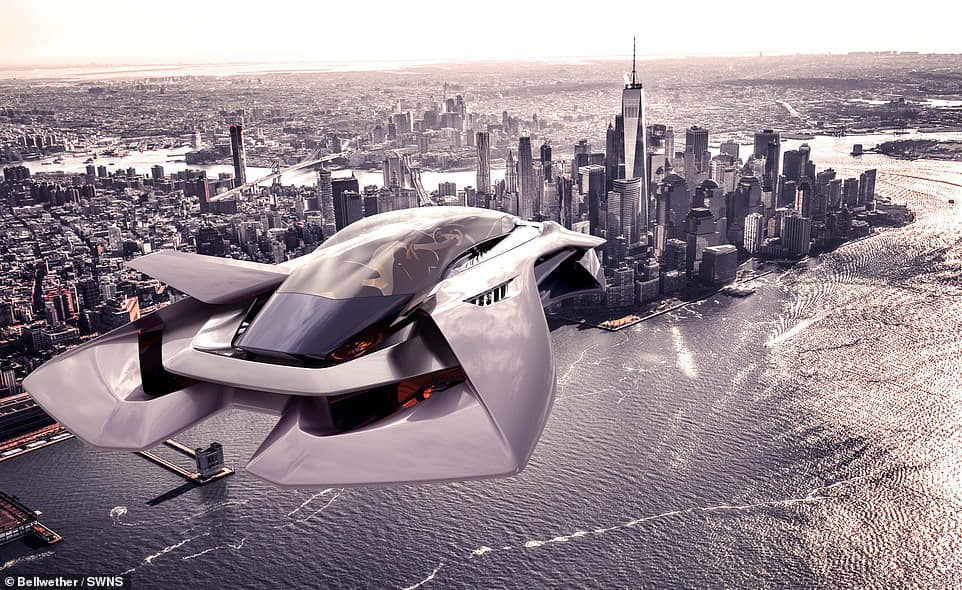A futuristic flying ‘hypercar’ designed for inner city travel that could reach speeds of 135 miles per hour at 3,000 feet has completed a successful test flight in Dubai.

London-based startup Bellwether Industries completed its test flight of the fully-electric Volar eVTOL prototype in November, but has only today revealed footage of the test. The futuristic half-scale version flew at an altitude of 13 feet (4 metres) with a speed of 40 kilometres per hour (25 miles per hour), according to the firm.

The Bellwether Volar eVTOL prototype has been designed for private owners as a replacement for cars, freeing up space on the ground for cyclists and pedestrians and alleviating congestion, but it could also provide on-demand transport much like an Uber. It plans to have a full-scale prototype to be ready and tested by 2023. Availability of the final model is expected in 2028 for on-demand transport and 2030 for private ownership, which would allow users to fly to work for a luxury commute.

The company says the vehicle is the world’s first without a large wingspan or exposed blades, making it ideal for urban use, although the firm is yet to confirm exactly how much it would setback customers.

Bellwether Industries was able to log eight test flights with its half-scale model during the recent Dubai session, following a year of indoor tethered flights. The Dubai test flight demonstrated stability and controllability of the prototype and marks the start of a series of development projects, according to the firm.

The electric vehicle has a hidden propulsion system featuring ducted fans, avoiding any exposed spinning blades or a large wingspan.

It would charge just like an electric vehicle does on land – at dedicated charging points – although it will have to rely on a ‘comprehensive infrastructure and transport system’ to avoid falling out the sky when the charge is used up, the firm said.
The current prototype has just two seats, but the firm’s ultimate vision is a four-to-five-seater aircraft to fit entire families, carrying out intracity travels at an altitude of 3,000 feet (915 metres) with a speed of up to 135 miles per hour (220 kilometres per hour).

Regarding prices, the company hasn’t revealed a specific amount but said its goal is to make owning a Volar eVTOL ‘as easy as like owning a car’ and ‘no bigger nor pricier than a car’. ‘But of course the first volar model on the private market will be more expensive,’ the spokesperson told mailOnline. ‘The plan is to provide on-demand transport by 2028 and private ownership by 2030.’
Bellwether Industries defines ‘volar’ as ‘a new category of transportation – private urban aircraft for inner city travel. The vehicle is defined as a vertical take-off and landing (eVTOL) aircraft, which can take off straight up into the air, reducing the need for runway space.

The eVTOL industry is predicted by Morgan Stanley to be worth $1.5 trillion (£1.1 trillion) by 2040.
As well as private flying vehicles, efforts are also underway by other companies to create a fleet of commercial vehicles to transport paying customers, much like taxis or ride-sharing vehicles except airborne. Flying taxis are set to shuttle passengers from Heathrow to cities in the South of England for the price of an Uber cab in just four years’ time, it was revealed last year.

Passengers arriving at Heathrow could take an electric air ‘taxi’ to London’s Canary Wharf in just 13 minutes for about £50 per passenger. A Uber journey costs £46. Officials in Paris are also hoping to use flying taxis to shuttle sports fans across the city during the 2024 Olympic Games.

South Korean car maker Hyundai is also planning to develop autonomous electric taxis with seating for up to five passengers that will hit the skies by 2028.
